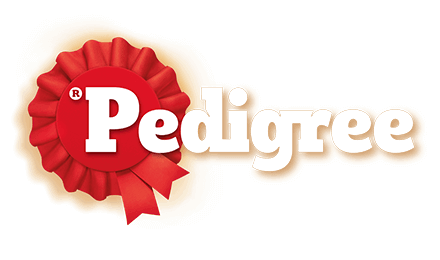Find products that match your dog’s needs

When it comes to Japanese dog breeds, the Akita and the Shiba Inu often capture our attention with their striking resemblance, curled tails and sharp, triangular ears giving them a distinctive look. However, under the surface, these breeds tell different stories. While they share a heritage as skilled hunters, Akitas are larger, robust members of the Working Group, and Shiba Inus are agile members of the Non-Sporting Group. In this blog, we'll delve into the fascinating world of these two breeds, unveiling what makes each of them unique as we compare the Akita dog vs Shiba Inu dog.
The below table highlights the key differences when comparing between the Akita dog vs Shiba Inu dog:
Characteristics | Akita | Shiba Inu |
Lifespan | 10 -14 years | 13 -16 years |
Coat type | Dense, double coat | Double coat with stiff outer coat and thick undercoat |
Coat color | Wide variety of colors | Red, black, tan, sesame and cream |
Body | Muscular and heavy boned | Well-muscled and small |
While the two dogs may appear similar at first glance with their curled tails and triangular ears, a closer look reveals a vast difference between Shiba Inu and Akita in their physical characteristics. Let's explore these distinct traits:
Both the Akita and Shiba Inu boast a double coat, an evolutionary adaptation for their historical roles as hunters in Japan. This feature gives them a similar textured appearance; however, the Akita's coat tends to be more luxuriant and plusher. Shiba Inus, by contrast, have a less dense yet equally beautiful coat that complements their smaller stature. According to breed experts, the texture and care of their coats reflect their historical environments and uses.
Between the Shiba inu vs Akita, size is the biggest difference. When comparing the Shiba Inu dog vs Akita, the Akita, majestic and formidable, is the largest of the Japanese breeds, bred for strength and endurance. In contrast, the Shiba Inu is the smallest, more compact and agile, suited for flushing out small game. This size difference makes the Akita a powerful guardian, while the Shiba Inu remains a lively companion, surprising those unfamiliar with the breed.
Characteristics | Akita | Shiba Inu |
Height | 26 – 28 inches | 14.5 – 16.5 inches |
Weight | 45 – 58 kg | 7 – 10 kg |
Akitas and Shiba Inus are both cherished for their unique personality traits, but they exhibit quite different temperaments, levels of trainability, and sociability.
Akitas are known for their quiet yet protective nature, demonstrating loyalty and affection to their families while maintaining a cautious attitude towards strangers. This breed possesses an independent streak and a strong instinct to guard, which can translate to wariness around unfamiliar people and animals. Shiba Inus, by contrast, are spirited and alert, with a confident demeanor. These agile companions were initially bred for hunting, showing good-natured assertiveness and charm akin to their fox-like appearance.
The intelligent Akita requires consistent training from an early age, with a focus on socialization to manage their guardian instincts. Due to their independent nature, they might not easily comply with commands, making patience in training essential. Shiba Inus are similarly intelligent but have a notorious stubbornness, meaning they can be a handful to train. Despite their independence, Shibas are almost naturally housebroken, displaying remarkable control at a young age.
While Akitas thrive with companionship from their human families, they may not be sociable with other dogs, particularly those of the same sex, due to their dominant nature. They also show strong territorial instincts, highlighting the need for controlled social settings. Shiba Inus, despite their popularity, are not typically trustworthy off-leash and may demonstrate flight risk behaviours. Nonetheless, they adapt well to both urban and rural environments, making them versatile companions when properly managed.
Both Akitas and Shiba Inus are renowned for their independence and intelligence, traits that make them great companions. Akitas are particularly celebrated for their unwavering loyalty to their families, often described as protective and devoted by their proud owners. Their strong-willed nature, however, means they're not suited for first-time owners, as they require careful socialisation and understanding. On the other hand, Shiba Inus combine their intelligence with a famously catlike demeanour. Their natural cleanliness makes them easy to house train, an attribute complemented by their vigilant watchdog capabilities. Shiba Inus possess a certain aloofness, showcasing a variety of personalities, each with its quirks. This unique blend of independence and personality means they often have their own ideas about training, sometimes flipping the script on their human companions.
Both Akitas and Shiba Inus present unique wellness profiles that potential dog owners should understand before bringing one home. Here is what you need to know about the overall well-being of these dogs:
When it comes to energy levels, Akitas are robust and lively, a testament to their roots as hunting dogs in Japan's rugged terrain. They benefit from daily exercise to keep their energy in check and support their vigilant nature. Shiba Inus, though smaller, are equally energetic, thriving on walks and playtime. However, they should never be let off-leash outside confined areas due to their instinct to bolt impulsively.
In terms of health concerns, Akitas, due to their size, can be prone to bloat and hip dysplasia. As such, careful feeding practices and regular vet check-ups are advisable to manage these risks. Shiba Inus generally have a longer lifespan, though they may face issues such as allergies and joint problems like patella luxation. Understanding these breeds' energy needs and potential health concerns ensures they live fulfilling and healthy lives, making them cherished companions.
Choosing between an Akita and a Shiba Inu largely depends on your lifestyle and experience as a dog owner. Akitas are ideal for families seeking a reliable guard dog, thanks to their vigilant and loyal nature. They thrive in active homes but aren't overly hyper, making them suitable for both on-the-go lifestyles and more laid-back environments. However, Akitas may not be the best fit for homes with other pets or first-time dog owners. On the other hand, Shiba Inus are highly adaptable, flourishing in various living spaces. They can be good family pets and get along reasonably well with children and other dogs. Nonetheless, their independent spirit necessitates vigilant and responsible owners. While both breeds offer unique qualities and require dedicated training, they promise unwavering loyalty and companionship for the right owners.
Both Akitas and Shiba Inus are intelligent but independent, making them challenging to train. However, Shiba Inus can be somewhat stubborn, requiring consistent, patient training. Akitas may need experienced handlers due to their protective instincts.
Both breeds can be suitable for families, but Akitas are often more protective, making them better guard dogs. Shiba Inus, being adaptable, are often easier in smaller living spaces and can be more social with kids and other pets.
Akitas and Shiba Inus both have double coats that require regular brushing, especially during shedding seasons. While neither requires excessive grooming, maintaining their coats helps control shedding, keeping their appearance neat and tidy.
In breed classifications, the Akita belongs to the Working Group, highlighting its guardian instincts. Meanwhile, the Shiba Inu falls under the Non-Sporting Group, noted for its adaptability and companionable traits.

Find a PEDIGREE® stockist
near you!
Buy online
Click to buy from any of the retailers below

